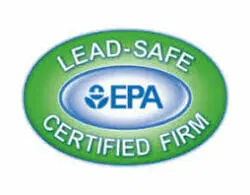Are you thinking about repainting some of the walls in your house? At first glance, this seems like a fairly simple project ““ and it is possible to finish it quickly, with the right equipment and know-how. But something many DIY painters forget is that their walls and rooms actually need some key preparation to really get the best results from a painting project. Here’s what you should know.
Remove All Your Furniture
Painting a room takes ““ well, a lot of room! You need space to position yourself and your roller, plus space to use ladders if necessary. You also don’t want to get any paint splatter on your furniture by accident. So one of the most important steps is to move the furniture to another room. If that’s not possible, at least move everything away from the walls and make sure it’s covered for protection.
Dust and Clean
Dust and clean all the main surfaces in your room! Don’t skip this step, even if your walls look very clean: Over time, thin coats of dust cling to your walls, and even though they can be hard to see at a glance, they will prevent paint coats from bonding properly and cause other issues as well. Plus, you will also want to get rid of any cobwebs, streaks, and other more noticeable dirt on your walls. Using a little bit of water and cleaner is fine, but don’t soak your walls and wait for them to dry entirely ““ a day or two ““ before you start painting them.
Scrape and Fill the Surface As Needed
As you clean, you may notice old paint bubbles, peels, or protruding cracks. You don’t need to remove the entire layer of old paint (usually), but you do need to scrap down these bubbles and any other protrusions. Your goal should always be to have a surface as smooth as possible for the new coat of paint. The same is true of any noticeable holes or cracks: Have some filler or drywall paste on hand to deal with these gaps now, before you paint.
Use Primer If Necessary
A coat of primer is very important for many surfaces. If you have a rougher surface or a surface with an older coat of paint on it ““ especially a darker paint ““ then one or two coats of primer is probably necessary for the best results. This may seem time-intensive, but primer will help your walls look great, make sure your paint lasts as long as possible and makes sure the color you want is the color you end up getting. Some surfaces don’t need primer, but this is rare in a home that’s already been painted. Ask us if you aren’t sure!
Tape Around Edges and Fixtures
Get some painter’s tape and tape around any light fixtures, doors, and floors. This is a vital step that will keep paint off the edges of all your other surfaces. Plus, it makes painting go a lot faster!
Need more help with preparation tips or projects? Contact Tar Heel Painters today to ask questions, learn more, or arrange for a quote. We’re happy to help you make sure your painting project ends with perfect results.
The post How to Prep for Painting appeared first on Tar Heel Painters.





